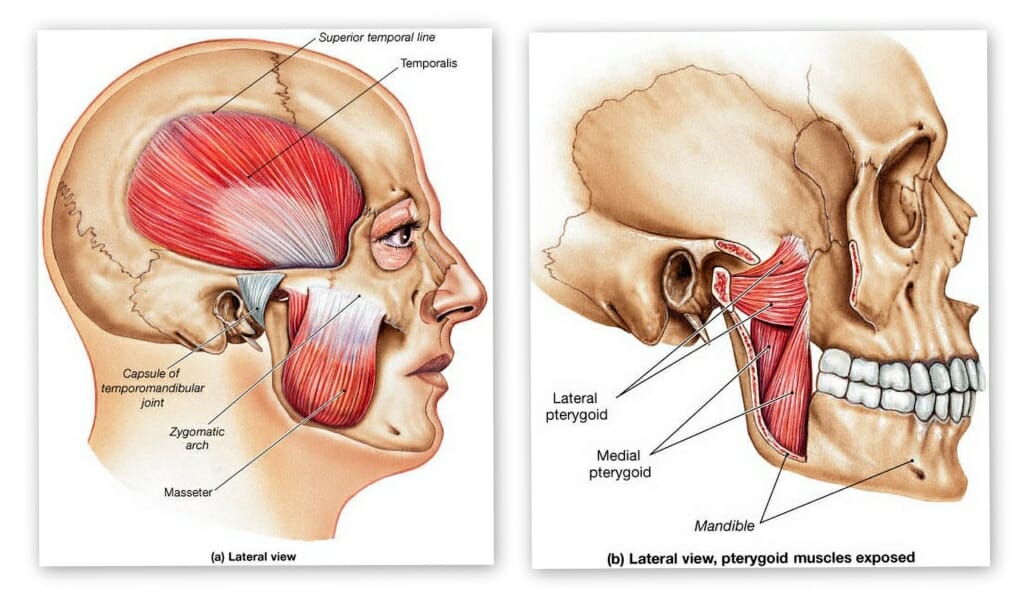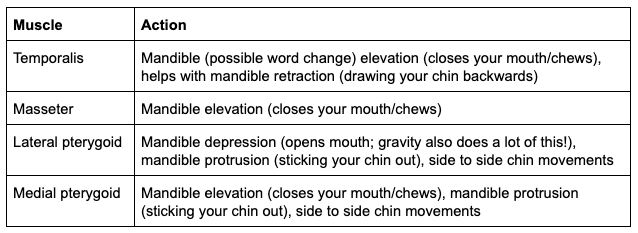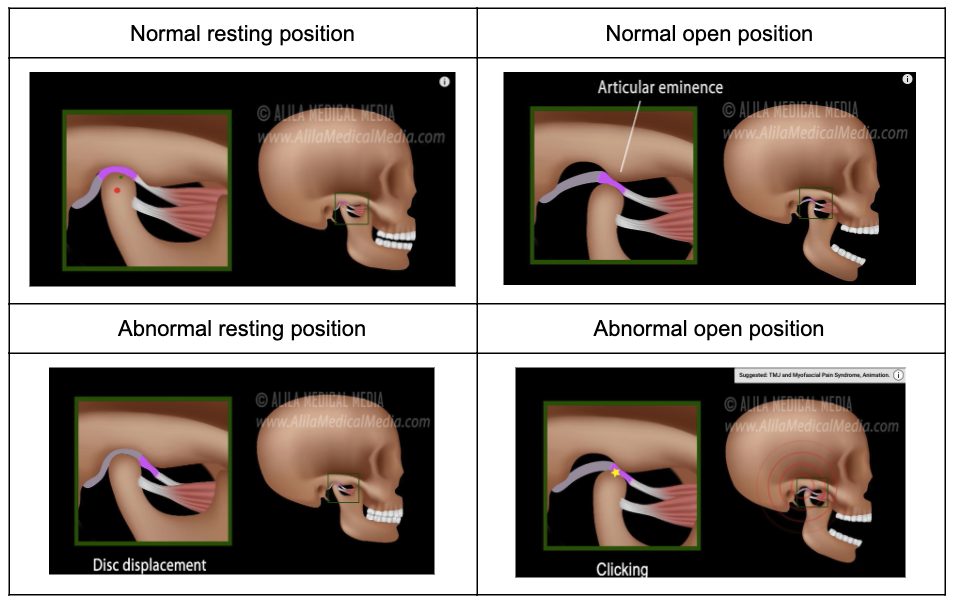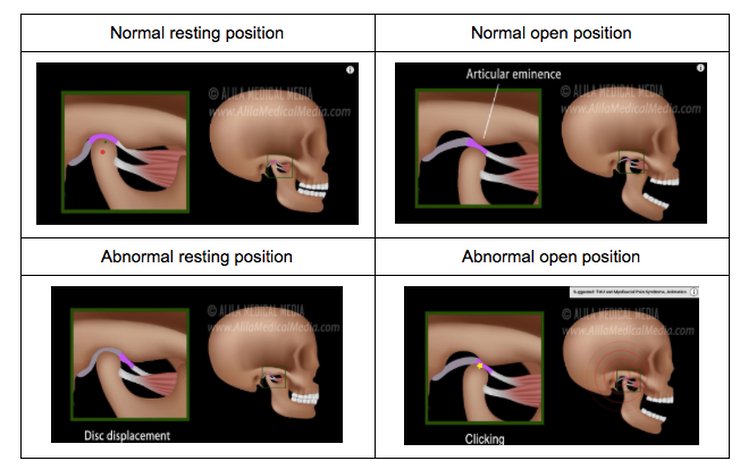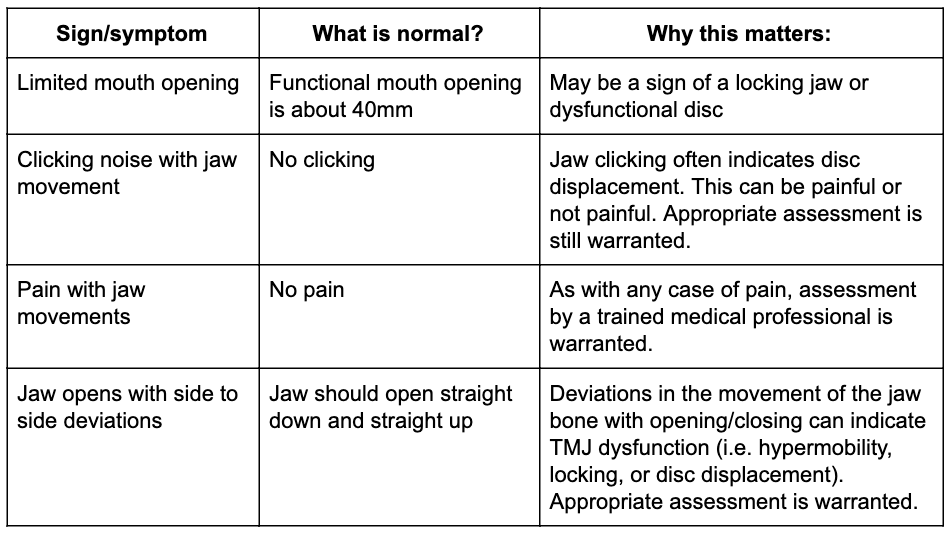To put it frankly, if you have TMJ dysfunction, a lot of things can suck. For example:
- Talking. Yes, something as simple as talking can be painful/annoying.
- Laughing. Yes, you would look like a grinch while trying to avoid pain.
- Dental work. Okay, so this one is a hard sell, but it’s still important to have clean chompers and going to the dentist (in my opinion) is no fun anyway, so imagine also being in a ton of pain afterwards.
- Eating. Yes, opening your mouth wide to bite into a big ol’ burger (or apple for my vegetarian friends), would be frustrating, and often painful. On top of that, even cutting it up and eating it in smaller pieces can be painful. In many cases, the simple act of chewing food is affected when you have TMJ dysfunction!
Right now, you’re probably thinking one or more of a few things:
- Whoa, Tyler, you’re right, that would suck!
- Whoa, Tyler, have we met!? You’re describing me to a tee!
- Whoa, Tyler, hold up! What’s a TMJ!?
So let’s work backwards on these three thoughts…
What’s a TMJ?
TMJ stands for ‘temporomandibular joint’. The temporal bone is part of your skull, the mandible is the lower half of your jaw. Together, they form a joint, as seen here:
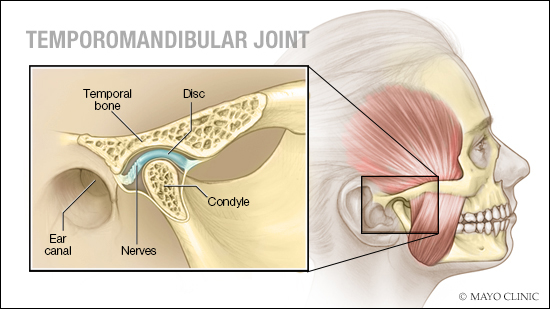
If you want to feel your TMJ moving, place your fingers about 1 finger width in front of your ear openings, and open/close your mouth.
The mobility of your jaw and mouth (i.e. opening and closing), is thanks to your TMJ joints (you have one on both sides). As you can see in the above picture, the TMJ also consists of a disc that sits between the two bones. In many cases, it is the function (or dysfunction) of the disc mobility that leads to complications with the TMJ. More on this later.
The movement of your TMJ comes from multiple muscles. We will review their location and function next. First, take a look at this photo to help visualize the muscles.
The four face/head specific TMJ muscles we will review are the temporalis, masseter, medial pterygoid, and lateral pterygoid. As you can see, these muscles are in your cheek, temple area, and side of your jaw (to keep it simple). Here’s what these muscles do:
Knowing what each muscle does can help identify what to treat. For example, if someone is always clenching their teeth, it is possible that the mandible elevators (temporalis, masseter, medial pterygoid) will be tight/overworked! Teaching them to be looser/relaxed can help alleviate pain! (Note: massage therapy can play a role here as well!)
Additional notes on muscles: the TMJ is also affected by other neck and shoulder muscles. Your physiotherapist will examine both the muscles above and the muscles of your neck and shoulders. There are too many to name for this particular blog post, but don’t be surprised if you come to learn that your TMJ dysfunction is coming from neck or postural muscle dysfunction/tightness.
What’s normal TMJ function, (and what’s dysfunction)?
In a normally functioning TMJ, the mandibular condyle (part of the jaw bone) first rolls forward (first half of opening), then slides forward (second half of opening).
The disc between the temporal (skull) bone and mandibular (jaw) bone facilitates these actions to make things a smooth transition.
The most common TMJ dysfunction is called disc displacement. This is when the disc that should be between the two bones has been displaced (usually forwards). The space between the two bones is now taken up by retrodiscal tissue (read: “tissue that attaches to the disc and is usually behind the disc”). Retrodiscal tissue has a lot of nerve endings, and this is therefore painful (in most cases) when it’s being pressed between the temporal bone and mandible.
When opening takes place, the mandibular condyle (jaw bone) has to ‘jump’ back onto the disc. This usually creates a ‘clicking’ sound/feeling. Anterior (forward) disc displacement is depicted in the images below using screenshots from this video describing the mechanics of the TMJ. (Watching this video will help make sense of the normal joint mechanics as well!)
Anterior disc displacement is just one of the potential causes of TMJ pain or dysfunction. It is also possible to have TMJ pain or dysfunction without clicking, or a jaw that locks (closed or open). A thorough assessment and examination by a trained medical professional is the best way to determine the mechanics of each individual case.
How to know if your TMJ is functioning normally, or abnormally:
I’ll summarize things in table form for quick reference. Of course, all cases are individualized, but this will cover the most common signs/symptoms.
Potential risk factors for TMJ dysfunction
TMJ pain/dysfunction can be attributed to a trauma (i.e. a blow to the jaw/face), awkward posturing, or from idiopathic sources. TMJ dysfunction is more common in women, although it is not completely clear as to why. People who clench their teeth/jaw are also more likely to develop TMJ dysfunction, and it is believed that high levels of stress can also affect this joint.
What can be done about TMJ dysfunction? (Read: how can you make things suck less)
Physiotherapists can treat TMJ dysfunction. Much the same as assessing/treating a knee, shoulder, or back, a skilled physiotherapist will assess and treat your TMJ. A few things about treating the TMJ are different, or unexpected. For example, if you hurt your knee, you would expect the physiotherapist to palpate your knee, move your knee around, ensure your knee had the capacity to do the demands you were placing on it (i.e. do some knee exercises). The same applies when managing the TMJ. The therapist will palpate your TMJ, move the TMJ around… this is the part that can be a little unexpected….
The TMJ can be palpated from the outside (just in front of your ear opening), but also from the inside. This means that to get a good idea of what’s going on, it is likely that the physiotherapist will also do intraoral (inside your mouth) assessments (and subsequent treatments). Don’t worry, we wash our hands, and wear gloves! This can include massaging the cheek muscles (from the inside and outside) and pressing on your teeth in order to move the TMJ joint.
All that being said, a physiotherapist will look at how your jaw moves (both actively and passively), how strong it feels, and how much control you have over your jaw muscles. They will also analyze your neck, posture, shoulders, and upper back. They will synthesize this information to formulate the best-individualized treatment plan for you, and many of the exercises are simple but effective.
In short, to make things suck less, see a physiotherapist!
Is your TMJ making some things suck? Call us at 519-895-2020, or use our online booking tool on www.strivept.ca to book an appointment with one of our knowledgeable physiotherapists, and they will be sure to help you understand your injury.
Until next time,
Tyler Allen
Physiotherapist at Strive Physiotherapy and Performance
